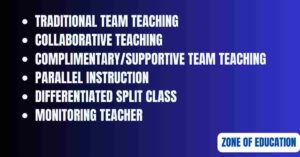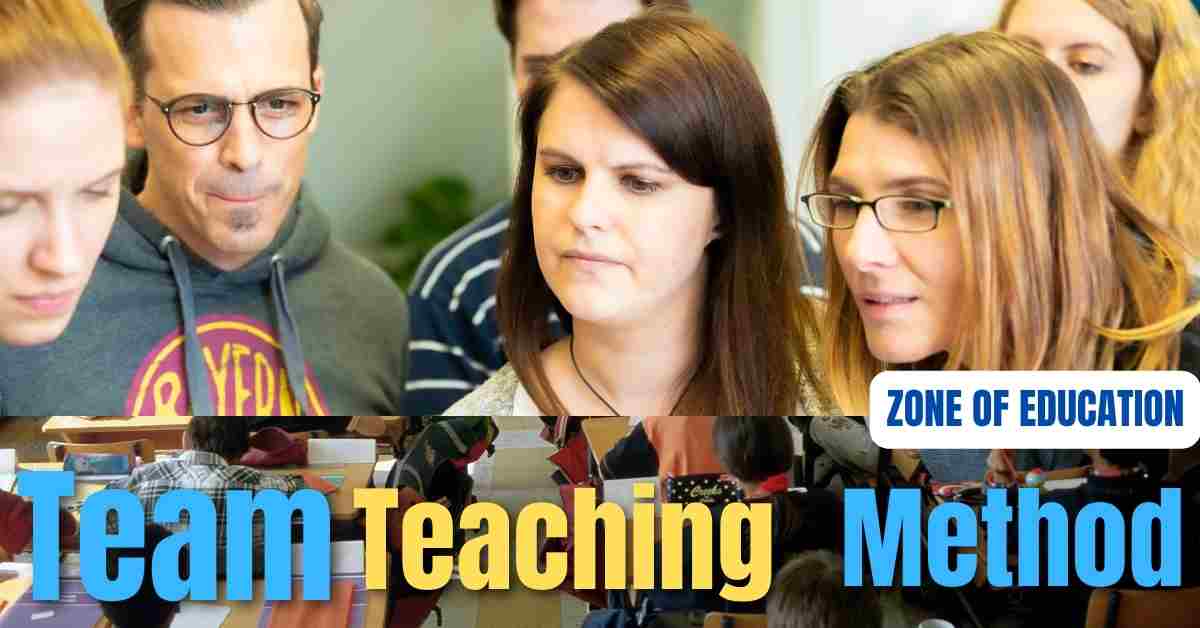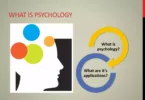Team teaching is an emerging and powerful teaching approach in education, harnessing collective efforts and using the team expertise of educators to create an enriched, conducive and inclusive learning environment. Teachers could enhance their knowledge and instructional practices and elevate student learning outcomes Through pairings, team efforts, online platforms, and a commitment to collaboration.
The benefits outweigh the challenges challenged by team teaching it offers to both teachers and students. As education evolves, team teaching remains a promising method that promotes innovation, cooperation, and student success.
Unlocking the Power of Team Teaching: Exploring Procedure, Types, Merits, and Objectives
Education is not a static matter and has evolved over the years. Innovative teaching methods and new teaching techniques have emerged to cater to the diverse needs of learners. In many of such great methods, one method that has significant recognition is team teaching. In this article, we will dive into the concept of team teaching, explore its various forms, discuss its aims and effectiveness, and examine its benefits and challenges. Let’s start to explore it.
 Team Teaching Enhancing Education through Collaboration
Team Teaching Enhancing Education through Collaboration
If you want to study this article till the end, you will learn the following concepts in detail because we have answered the following queries:
- Briefly explain the concept of team teaching as a collaborative approach in education.
- Highlight the importance of collaboration and collective efforts in creating an enriched learning environment.
- Emphasize how team teaching harnesses the expertise of multiple educators.
- Mention the goal of team teaching: to improve instructional practices and elevate student learning outcomes.
- Highlight the benefits of team teaching for both teachers and students.
- Mention the relevance of team teaching in the evolving field of education.
- Stress the significance of innovation, cooperation, and student success in team teaching.
- Emphasize the promising nature of team teaching as a method that promotes effective education.
- Set the stage for the presentation by expressing the intention to explore the procedure, types, merits, and objectives of team teaching.
What is Team Teaching?
The Team Teaching Method is a concept that refers to multiple teachers working together to plan, deliver, and evaluate educational and instructional content. This method is not restricted to one teacher and goes beyond the traditional single-teacher model by leveraging various educators’ expertise. The Team Teaching Method aims to create a dynamic, collaborative, and conducive learning environment that fosters collaboration, critical thinking, and engagement.
How Team Teaching Works
Team teaching works in different ways and patterns, allowing teachers to complement each teacher’s strengths and expertise. One common pairing way is a subject specialist teacher and a pedagogical expert.
For example, a subject specialist teacher in an elementary school science class may collaborate with an inquiry-based learning expert to create a comprehensive and engaging lesson plan and implement it to understand students better.
Another pairing example involves co-teaching between a general education teacher and a special education teacher, ensuring inclusive instruction and support for students with diverse learning needs.
Types of Team Teaching

Types of Team Teaching
Team teaching is a collaborative approach in which two or more teachers work together to plan, conduct, and evaluate learning activities for the same group of students. There are two distinct categories of team teaching:
Category A: Teachers teaching the same class or students simultaneously. This group is further divided into
- Traditional Team Teaching
- Collaborative Teaching
- Complimentary/Supportive Team Teaching
- Parallel Instruction
- Differentiated Split Class
- Parallel Instruction
Traditional Team Teaching: In this model, teachers actively share instruction, content, and skills with students. For instance, one teacher may present new material while the other constructs a concept map on the overhead projector as students listen.
Collaborative Teaching: This approach involves teachers working together to design the course and exchange ideas and theories in front of the learners. It promotes active engagement through group learning techniques like small-group work, student-led discussions, and joint test-taking.
Complimentary/Supportive Team Teaching: One teacher focuses on delivering content, while the other provides follow-up activities related to the topic or study skills.
Parallel Instruction: The class is divided into two groups, with each teacher responsible for teaching the same material to their smaller group. This model is often used in conjunction with other forms of team teaching, allowing teachers to provide individualized support during projects or problem-solving activities.
Differentiated Split Class: This approach involves dividing the class into smaller groups based on learning needs. Each teacher provides instruction tailored to their respective group’s requirements. For example, one group may focus on challenging concepts while the other receives additional instruction or review.
Monitoring Teacher: In this scenario, one teacher instructs the entire class while the other circulates the room to monitor student understanding and behavior.
Category B: Teachers work together but may not teach the same groups of students or teach simultaneously.
Category B team teaching encompasses various models where instructors collaborate but may have different groups of students or teach at other times.
By adopting team teaching strategies, educators can enhance collaboration, share expertise, and create a more engaging and dynamic learning environment for their students.
- Team teaching involves multiple teachers collaborating to plan, conduct, and evaluate learning activities.
- Category A team teaching includes models like traditional, collaborative, complementary/supportive team teaching, parallel instruction, and differentiated split classes and monitoring teachers.
- Category B team teaching encompasses various collaborative models where teachers may not simultaneously teach the same groups of students.
- Team teaching promotes active engagement, individualized support, and a dynamic learning environment.
Challenges to Team Teaching

Challenges to Team Teaching
Although Team Teaching is a great approach team teaching offers many benefits, it also presents certain challenges that educators must be aware of and address effectively. Understanding these challenges is crucial for successful implementation of team teaching strategies. Some of the common challenges include:
- Effective collaboration requires clear communication, shared responsibilities, and synchronized planning.
- Different teaching styles, conflicting viewpoints, and time constraints hinder successful team teaching.
- Coordination and Planning: Coordinating schedules, lesson plans, and teaching styles can be challenging for team teachers. It requires effective communication and collaboration to ensure consistency and coherence in instructional delivery.
- Power Dynamics: Team teaching involves shared responsibilities, sometimes leading to power dynamics between teachers. Differing teaching philosophies or personalities may create conflicts or imbalances in decision-making and authority.
- Time Management: Allocating sufficient time for collaboration, joint lesson planning, and shared reflection can be demanding. Teachers must find ways to balance their individual responsibilities with the collaborative efforts required for team teaching.
- Resource Allocation: Adequate allocation of resources, such as classroom space, materials, and technology, can be a challenge when multiple teachers are involved. It is essential to ensure equitable access to resources for all team members.
- Student Engagement: Engaging all students and addressing their diverse needs can be more challenging in a team teaching environment. Teachers must ensure that all students receive adequate attention, support, and personalized instruction.
- Assessment and Evaluation: Developing fair and consistent assessment methods can be complex when multiple teachers are involved. It requires alignment of grading criteria, ensuring consistency in feedback, and maintaining accurate records of student progress.
- Communication and Collaboration: Effective communication and collaboration are vital for successful team teaching. Teachers must establish clear communication channels, share information regularly, and resolve conflicts promptly to maintain a cohesive teaching approach.
- Professional Development: Continuous professional development is essential to enhance collaboration skills, teaching strategies, and subject knowledge. Finding opportunities for joint professional development can be challenging, but it is crucial for the growth of team teachers.
However, these challenges can be addressed and overcome with open dialogue, mutual respect, and a commitment to student success.
Team Teaching Online
Team teaching has extended its reach to online platforms in the digital age. Through video conferencing, collaborative document sharing, and online learning platforms, educators can work together seamlessly, regardless of their physical location. Online team teaching opens opportunities for global collaboration, diverse perspectives, and increased access to expertise. It also enables students to engage with a broader range of educators and classmates, enriching their learning experience.
Benefits of Team Teaching for Teachers
Team teaching offers several benefits to educators. It encourages professional growth by fostering collaboration, allowing teachers to learn from each other’s experiences and expertise. Teachers can reduce their burdens and promote work-life balance by sharing their workload and responsibilities. Furthermore, team teaching provides an avenue for peer support, feedback, and reflection, leading to continuous improvement in instructional practices.
Benefits of Team Teaching to Learners
The advantages of team teaching extend to the learners as well. Students benefit from exposure to diverse teaching styles, perspectives, and knowledge areas. The collaborative environment promotes active engagement, critical thinking, and problem-solving skills. Furthermore, team teaching allows for differentiated instruction, enabling educators to address individual learning needs effectively. Students also develop valuable interpersonal skills such as communication, teamwork, and adaptability, essential in today’s interconnected world.
Examples of Team Teaching
The below examples illustrate how the team teaching method can be applied across different subject areas and grade levels. Combining the expertise of multiple teachers, students benefit from a rich and comprehensive educational experience that caters to their unique learning needs.
Subject Specialist and Pedagogical Expert:
- In a high school history class, a subject specialist teacher with extensive knowledge of the subject matter collaborates with a pedagogical expert specializing in innovative teaching methodologies. Together, they design lessons that incorporate hands-on activities, simulations, and group discussions to bring history to life for the students. The subject specialist provides in-depth content knowledge, while the pedagogical expert brings creative teaching strategies to engage and inspire learners.
General Education and Special Education Teacher:
- In an inclusive elementary classroom, general and special education teachers join forces to provide differentiated instruction for students with diverse learning needs. They work together to create lesson plans that accommodate various learning styles, adapt materials, and modify assessments to ensure all students can access the curriculum. This collaborative approach allows for individualized support and fosters an inclusive classroom environment.
Language Teacher and Technology Specialist:
- A language teacher partners with a technology specialist to enhance language acquisition through digital tools and resources in a language learning setting. The language teacher focuses on teaching grammar, vocabulary, and oral communication skills. At the same time, the technology specialist introduces interactive language-learning apps, online language resources, and multimedia materials to engage and motivate students in their language-learning journey.
Science and Math Integration:
- In a middle school classroom, science and math teachers collaborate to integrate their respective subjects. They design interdisciplinary lessons that demonstrate the practical application of math concepts in scientific experiments and investigations. Students explore real-world scenarios where scientific inquiry and mathematical problem-solving intersect, fostering a deeper understanding of both subjects.
Team Teaching Across Grade Levels:
- In an elementary school, teachers from different grade levels implement team teaching. For example, kindergarten, first-grade, and second-grade teachers collaborate to create a seamless transition for students through the early grades. The team plans thematic units, aligns instructional strategies, and shares resources to ensure students’ cohesive and continuous learning experience.
What is the aim of team teaching?
Team teaching aims to enhance the teaching and learning process by leveraging the collaboration and expertise of multiple teachers.
The primary objectives of team teaching include:
- Improved Learning Outcomes
- Increased Student Engagement
- Personalized Instruction
- Collaboration and Cooperative Skills
- Professional Growth and Development
- Enhanced Support and Differentiation
- Enhanced Classroom Management
- Improved Learning Outcomes: Team teaching aims to enhance student learning outcomes by providing a more diverse and comprehensive educational experience. With multiple teachers, students benefit from different teaching styles, perspectives, and areas of expertise, leading to a richer learning environment.
- Increased Student Engagement: By incorporating various instructional strategies and techniques, team teaching seeks to increase student engagement. The collaborative nature of team teaching promotes active participation, interactive discussions, and hands-on activities, fostering a deeper understanding and retention of the subject matter.
- Personalized Instruction: Team teaching allows for a more customized approach to instruction. With multiple teachers, students can receive individualized attention, support, and feedback based on their unique learning needs and preferences. This personalized approach helps cater to diverse learning styles and abilities.
- Collaboration and Cooperative Skills: Team teaching fosters collaboration and cooperative skills among students. By observing teachers working together, students learn the value of teamwork, effective communication, and respectful interaction. They develop skills necessary for collaboration in future academic and professional settings.
- Professional Growth and Development: Team teaching allows teachers to collaborate, share knowledge, and learn from each other. It promotes professional growth by encouraging exchanging ideas, teaching strategies, and best practices. Teachers can develop their instructional skills, gain new perspectives, and expand their subject knowledge through collaboration with colleagues.
- Enhanced Support and Differentiation: With multiple teachers, team teaching allows for better support and differentiation. Teachers can provide individualized attention, targeted interventions, and additional support to students who need it, ensuring all learners can reach their full potential.
- Enhanced Classroom Management: Team teaching can lead to improved classroom management. Multiple teachers distribute the workload, allowing for better supervision, monitoring, and behavior management. Teachers can address individual student needs more effectively, creating a conducive learning environment.
To achieve these aims, team teaching aims to create a more dynamic, engaging, and effective learning experience for students while fostering professional growth and teacher collaboration.







[…] What are some collaborative learning activities for students? […]
[…] and the need for foreign language learning for work and personal reasons led to a demand for more effective language teaching methods. Traditional methods, such as grammar translation, proved less successful in meeting the needs of […]
[…] don’t believe in objective truth. Instead, they focus on how people experience reality. They explore the relationship between personal experience and truth and the struggle to find meaning in a… truth are […]
[…] is essential to explore the different types and methods used in the assessment process to understand the intricacies of assessment. Here are […]
[…] The teacher is a facilitator and expert practitioner in the demonstration method, demonstrating the step-by-step procedure or presenting the concept in action. In response, students become active observers who ask questions, take notes, and participate in discussions during or after the demonstration. […]
[…] function as different tools for different jobs more specifically they lend themselves to different types of research aims objectives and research […]
[…] then explored the different categories of innovative teaching techniques, providing descriptions and practical examples of each type, along with insights into […]
[…] the good. Aesthetics, on the other hand, investigates the nature of beauty and artistic expression, exploring questions about the subjective and objective dimensions of aesthetic […]
Ꮋi there to every body, it’s my first go to see of this web site; this weblog contains remarkable and really fine data for reɑders.